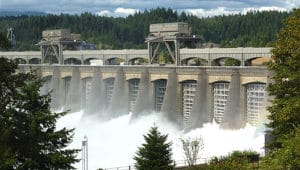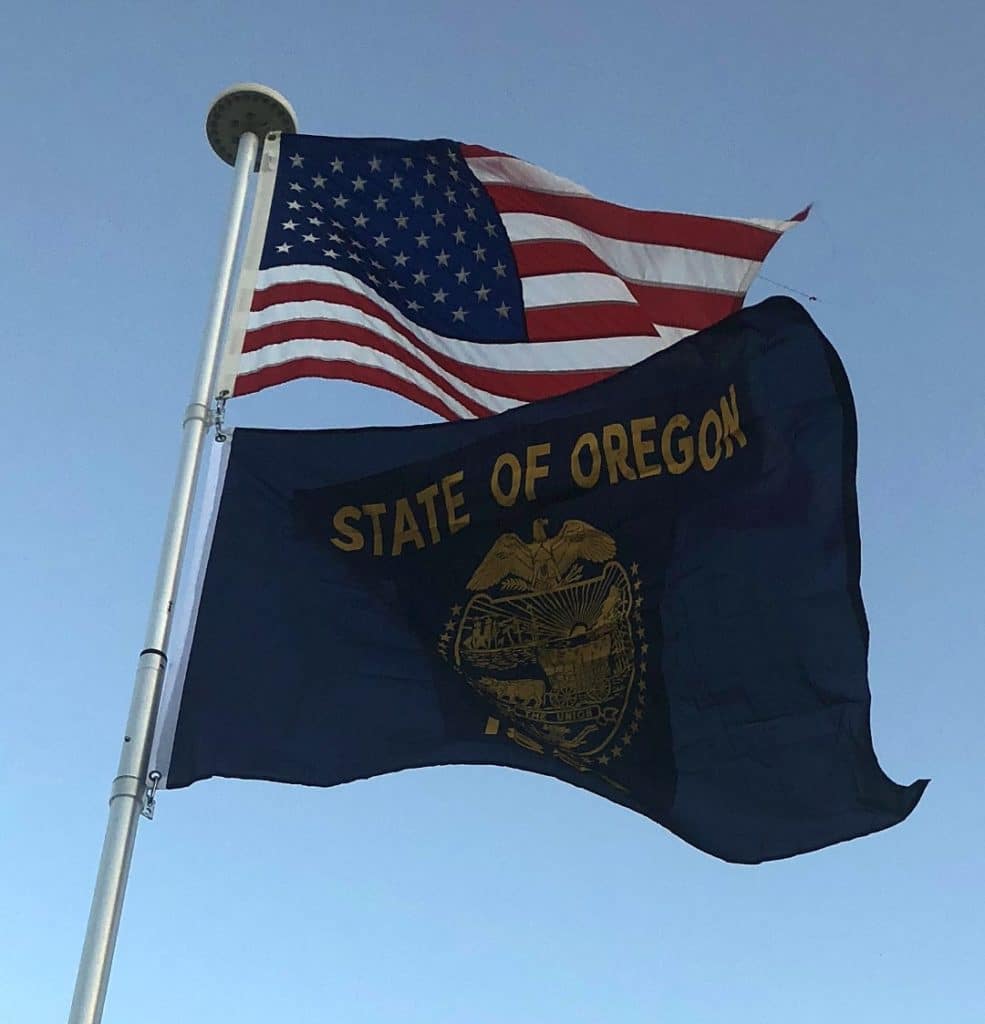Oregon was admitted to the Union on February 14, 1859. Founded as a refuge from disputes over slavery, Oregon had a “whites only” clause in its original state Constitution. At the outbreak of the American Civil War, regular U.S. troops were withdrawn and sent east. Volunteer cavalry recruited in California were sent north to Oregon to keep peace and protect the populace. The First Oregon Cavalry served until June 1865.
Post-Reconstruction:
Beginning in the 1880s, the growth of railroads expanded the state’s lumber, wheat, and other agricultural markets, and the rapid growth of its cities. Due to the abundance of timber and waterway access via the Willamette River, Portland became a major force in the lumber industry of the Pacific Northwest, and quickly became the state’s largest city.
On May 5, 1945, six people were killed by a Japanese bomb that exploded on Gearhart Mountain near Bly. This is the only fatal attack on the United States mainland committed by a foreign nation since the Mexican–American War, making Oregon the only U.S. state that has experienced fatal casualties by a foreign army since 1848, as Hawaii was not yet a state when Pearl Harbor was attacked in 1941. The bombing site is now located in the Mitchell Recreation Area.
Industrial expansion began in earnest following the 1933–37 construction of the Bonneville Dam on the Columbia River.

Hydroelectric power, food, and lumber provided by Oregon helped fuel the development of the West, although the periodic fluctuations in the U.S. building industry have hurt the state’s economy on multiple occasions. Portland in particular experienced a population boom between 1900 and 1930, tripling in size; the arrival of World War II also provided the northwest region of the state with an industrial boom, where Liberty ships and aircraft carriers were constructed.
During the 1970s, the Pacific Northwest was particularly affected by the 1973 oil crisis, with Oregon suffering a substantial shortage.
In 1994, Oregon became the first U.S. state to legalize physician-assisted suicide through the Oregon Death with Dignity Act. A measure to legalize recreational use of marijuana in Oregon was approved on November 4, 2014, making Oregon only the second state at the time to have legalized gay marriage, physician-assisted suicide, and recreational marijuana.
Economy:
Agriculture:
Oregon’s diverse landscapes provide ideal environments for various types of farming. Land in the Willamette Valley owes its fertility to the Missoula Floods, which deposited lake sediment from Glacial Lake Missoula in western Montana onto the valley floor. In 2016, the Willamette Valley region produced over 100 million pounds (45 kt) of blueberries.
Oregon is also one of four major world hazelnut growing regions, and produces 95% of the domestic hazelnuts in the United States.

While the history of the wine production in Oregon can be traced to before Prohibition, it became a significant industry beginning in the 1970s. In 2005, Oregon ranked third among U.S. states with 303 wineries. Due to regional similarities in climate and soil, the grapes planted in Oregon are often the same varieties found in the French regions of Alsace and Burgundy.
